#the nun imbd
Explore tagged Tumblr posts
Text
7 Reasons The Nun (2018) Is The Best Feminist Horror Film Ever.
As we steadily approach Halloween, we often tend to stumble across a mess of films that make up the horror genre.
Amongst most of the trash churned up by production companies is a tangle of tropes designed to make you turn your back on films with sense, and instead eat your own body weight in popcorn.
And it was the changing of the leaves that reminded me of a film that unfortunately got caught up in these horrors of the horror film industry:
Last year, The Nun was released as a sequel to the iconic Conjuring series, tracing a demonic tale that runs through the films. And lord, she was panned.

Horror film junkies didn’t show up to screenings, and if they did, they didn’t rate it highly.
Sure, it got mixed reviews.
Sure, it was haunted by its endless use of jumpscares.
And sure, it wasn’t the best clergyman in the congregation.
(Even though it somehow ended up as the film which made the most money out of the series…)
But something about it just clicked with me.
I liked how it was a small offshoot of my favourite set of flicks. And I loved how it weaved together the intricate stories that created the hula-hoop of horror plots.
But there was still something I just couldn’t quite work out!
It felt fresh, it felt different…
And it was only the other day that I worked it out, that the pieces clicked together, that I finally could finally yell ‘Eureka!’ at my dad over dinner.
I came to the realisation that The Nun is the feminist film we all need this October.
In fact, it jumpscared its way into the #MeToo movement, and fundamentally represented a takedown of the traditional portrayals of women in the genre of horror.
No, I take that back – every goddamn genre.
That’s why I’m here to stand in defense of The Nun.
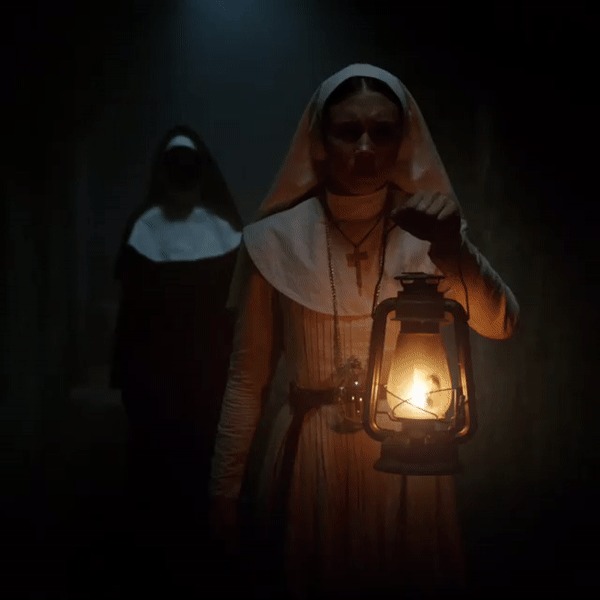
That’s why I’m here to contribute to the #MeToo movement, and take down the patriarchy one trope at a time.
Today’s post is going to take you through a rundown of women in the horror genre, how women have figured in the paranormal theories inspiring these films, and how The Nun is the feminist icon we should all stan this Halloween.
So, grab a crucifix, burn some popcorn in the microwave, and chuck on a white-purple-n-green sash.
Let’s get spooky.
How did horror films portray women before The Nun?
As made evident by recent allegations, convictions, and cases – or just, like, watching a film – you can see that most of the film industry has been stuck in the wrong century.
And it’s not difficult to decipher that horror films have featured prominent tropes that support this.
Their distressed and weak women are the fundamental building blocks to misogyny.
It’s even been traced to specific horror film genres, styles, and characters!

Take slasher films:
From The Texas Chainsaw Massacre to fellow horror icon Carrie, these films have been traced back to the good ol’ American Dream. The middle-class aspirations reflected across society and into the films that furthered the negative – but mainly weak – images of women.
And these images became some of the most striking tropes in horror films.
The first of these tropes is the Final Girl.
She’s pure, and she’s untouched.
She doesn’t smoke, doesn’t drink, and most definitely doesn’t die.
The female virgin is the first character to see that things aren’t quite right, and she’s the only one to see us through the plot and finally kill that monster.
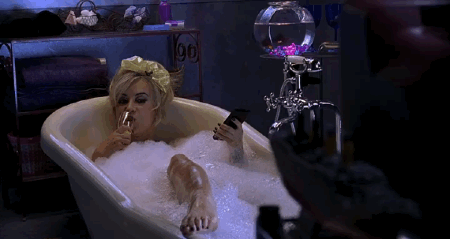
(And yes, that vague plot works for basically every horror film ever…)
The Final Girl gets her name by taking on male characteristics, ditching her femininity and finally taking on the monster!
With her new-found masculinity, she can survive, and live up to her name.
But it’s only when she conquers the monster by turning her back on femininity that she embodies the next trope on our list:
The Female Monster.
One of the main factors reinforcing misogyny is the sexualisation of the female body.
And in case you hadn’t noticed, the oversexualisation of women is central to most horror films.
From awkward sex scenes, to the troubling portrayals of high school girls, women’s bodies have undergone their maximum objectification in the horror industry.
But what I want to talk about here is the female monster.
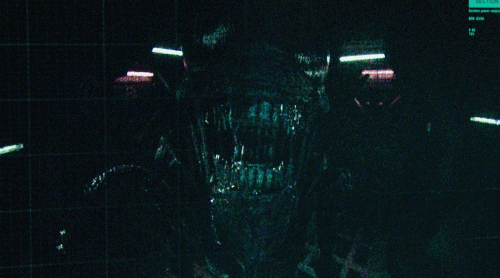
Her body is not used for a picture-perfect DVD-cover shot, and it’s not put in slow-mo for a cringey running shot. Instead, horror films consider the female monster’s body as abject.
By bringing together the physical processes associated with women – which include menstruation and giving birth – the monster is constructed.
Just think of the obsession with the ‘hysterical woman’! The horror film industry has spent most of its years evoking the image of the ‘triggered woman.’
Thus, the female monster is based on physical disgust as well as the masochism she seeks – this is what drives a wedge between male and female villains:
Male monsters commit sadistic acts in the aim of self-mutilation. Female monsters on the other hand commit such acts to avenge the abuse carried by those around them.
Take I Spit On Your Grave or Carrie.
Both iconic horror flicks, both iconic examples of the female monster:
Carrie avenges her high school class and spends most of the plot covered in pigs’ blood, echoing her original menstrual difficulties; and Jennifer is sported on the film posters as wearing little clothing and smeared in a sexy array of mud from which she seeks revenge on her rapists.
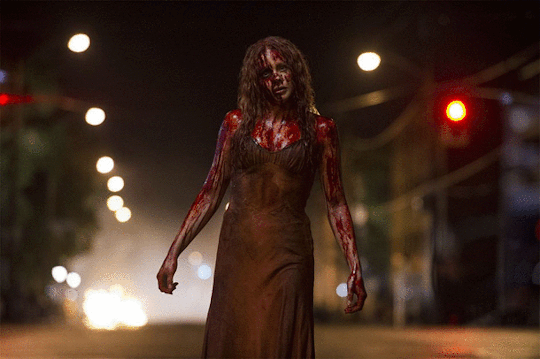
Evidently this fulfils the role of the ‘male gaze’ which never falls short of most genres, unfortunately.
But within this, we have to consider the key role of menstruation.
Think back to the opening scene of Carrie.
No, not the weird soapy boob bit, the bit where she starts bleeding from the vagina.
(Which BTW isnt how periods work in the shower.)
It is actually believed that the female monster can be traced to the bleeding vagina thing.
Basically, when a girl hits puberty, she immediately becomes a monstrous being, and follows another step to becoming the ‘female monster’.
Following on from this obsession with disgusting things and women, we come to the perverted mix of sex and violence that has contaminated the genre.
Take The Chase scene:
Think of the ripped clothes, the dim-yet-sultry lighting, and the dewy skin; it’s a live pop performance away from a Victoria’s Secret Runway!
Female victims are believed to be captured in this confused state of a sexualised body image and violence-infused distressed 5 times longer than their male-colleagues.
And once again we return to the Final Girl, and her survival of The Chase.
The final major trope we need to consider is that of the possessed young girl.
Affirming its role as a major horror theme, the innocent young girl is often laden with creepy vibes as the dangerous and demonic spirits take control of the events of the film through her.

And it’s possibly because an all-powerful demon strikes such a contrast with the innocent young girl.
Consider one of the most famous horror films to grace the industry - The Exorcist.
The all-swearing, sexually-harassing, self-mutilating, all-knowing possessed Reagan challenges every component of being a ‘young girl’.
And this is the mirror image of the role of women within paranormal theories.
What’s the role of women in paranormal theories?
Theories regarding the paranormal obviously are entrenched in past beliefs regarding the societal roles of the sexes.
The supernatural was their science, and their religion their law!
But I’m not here to list all the supernatural theories that specify the differences between the genders.
I’m going to focus on one key piece of theory that echoes out into the horror movie industry:
And it’s how women and young girls in particular were deemed more likely to be possessed by spirits.
To skip out the confusing bits, this is what you have to know: as women and young girls are considered weaker, they are more ‘open’ to allowing in spirits and demons, and thus being possessed.
Obviously, this has made its way into pop culture.
But beyond the creepy possessed girl is the gender roles entrenched within the theory of possession.
If we compare European and African sentiments regarding possessed women, we can see that each specific country upholds a specific focus on women.
For example, several African countries focused upon how possessed women were more likely to leverage their condition in order to gain luxury items.
Some belief systems even classified that certain spirits could possess only women!
Clearly, women’s relationship with the paranormal has been painful to say the least.
And this is what makes The Nun the feminist icon that it is; it breaks down both the horror film-specific misogyny, and the misogyny inherent in paranormal theories.
Here’s how.
Why we should stan The Nun. Like, right now.
Upon The Nun’s release, it was branded a basic-bitch horror film.
It had endless jump-scares, a silly monster, and a forced plot used to duct-tape the films together. But underneath that surface we see a feminist icon disguised as a basic-bitch horror film.
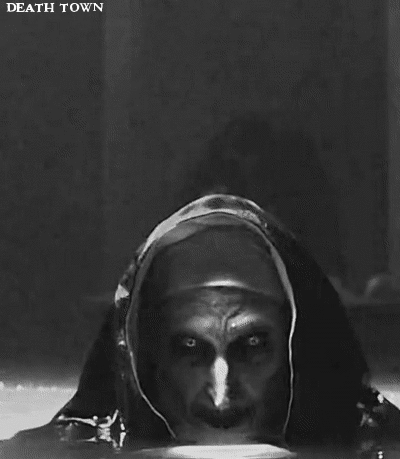
*I am about to discuss key plot points from The Nun - this is your spoiler alert!*
The film starts with the Vatican responding to claims of strange activity in an abbey (that just so happens to house the demonic Nun, Valak). A group of priests and other clergymen dictate the situation, and seemingly control the narrative.
And it’s this masculine and priest-based control that sticks to traditional films.
So, when the dream-team sent to investigate Valak is finalised, the move against the traditional tide surges.
We see the emergence of a new dynamic between the main characters – Frenchie, Sister Irene, and the Priest.
And it’s all down to the young soon-to-be-nun, Irene, who join forces with the priest to seek out the activity, and complete god’s mission on earth. Clearly – as she is a virgin and embodies the purity we expect from the trope – she is the Final Girl.
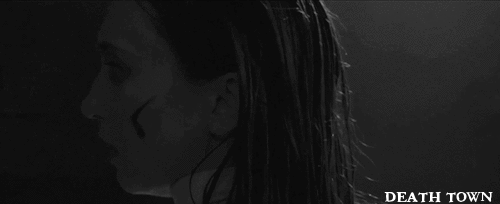
But she doesn’t swan around being cute and dorky. She doesn’t even end the film with a succinct rescue!
She expresses her own agency by placing power in her faith, and in her desire to be a Nun, which is the thing that fulfils her identity as the Final Girl.
Indeed, it is her visions that lead them to victory over the demon, Valak.
Her own faith which celebrates her virginity is what saves them!
She also demonstrates her own agency by going against the church’s teaching on dinosaurs, and when they embark on the journey to the abbey and deal with the problems there, she isn’t just a sidekick.
Irene stands together with the priest, and brings her own set of knowledge to the table. Sure, the priest embodies his own set of wisdom from his previous experience of exorcisms and his position in the church.
But it’s the collaboration between the two - rather than a well-timed rescue - that really emphasises her power.
To complete this, upon meeting Frenchie – who immediately smells of a love interest the second we see the curly mop of hair and hear that accent – he makes a pass at Irene. He is quickly shot down, and from there we see no forced love story set to entice the female audience.
Sister Irene is a new wave of ideas and spirituality that manifest even more promisingly in her visions. She represents feminism - this is key to my next point.
Now, I’m gonna be honest – I get confused here.
A key premise of the film is that Irene has visions. And one of these is when her and a group of nuns are praying to seal Valak in the abbey, and keep the demon at bay.
I’m not sure if all of the nuns we see throughout the film that were at the Abbey were real or just a part of these visions.
But we do know that at least one of these nuns existed - Victoria.
She was the nun that committed suicide at the beginning of the film.
It is later confirmed in the film that Victoria committed suicide to prevent Valak from possessing her body and escaping out of the Abbey. And alongside this, we see the constant battle and bravery of the nuns in keeping Valak at bay!
Just before Victoria commits suicide, another nun takes on the challenge of facing Valak, and attempts to seal the demon using the relic that we later find out is the blood of Christ.
Consistently we see nuns be badass.
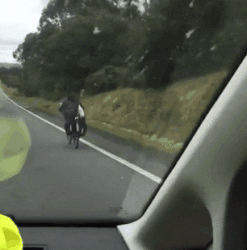
We see meek and mild women, drenched in Final Girl tropes throwing off the shackles of patriarchy and reclaiming not just their right to their sexuality and womanhood, but also to defending their faith and what they believe in!
What defines them is no longer their bodies, it’s their beliefs.
This is made dually effective by the comparison between their consistent efforts to keep Valak at bay and the initial efforts of the crusaders. The nuns mirror the efforts of actual knights, and use their agency and power of being nuns to do so.
We then come to the Nun - Valak - herself.
The monster titling the film ties together the tropes of the female monster and the possessed girl, evoking the role of women in horror films for the last 100 years.
Nuns often fulfill a mothering image.
So – just like the innocent young girls that figures so prominently in films such as The Exorcist or The Exorcism of Emily Rose - the mocking of such an image by a demon incites the traditional approach we see in traditional horror films.
This is accentuated by her appearance.
Not far off the female monster, Valak is hag-like, stretching the perverted image of a woman by mocking a nun.
And Valak’s demise – which is brought about by the most badass scene ever – involves Irene spitting the blood of Christ in it’s face.
It is a true act of guts, grossness, and power.
It once again evokes the obsession with blood and the female monster splattered across previous horror films.
It truly brings together the main image I have concluded is core to this film:
The new, badass anti-patriarchy nuns who defy all Final Girl tropes and represent feminism defeat Valak who symbolises the past, misogynistic horror film tropes.
(Okay, fine, I doubt James Wan and the rest of the people working on this film had this message in mind.)
This is solidified by the final 2 scenes that end the flick:
We think that Valak is defeated and sealed away in the hellish crevice from whence it came.
But it is not.
Instead, it has possessed Frenchie, and this is who the Warrens find and exorcise. Footage of this then draws us back to the first film.
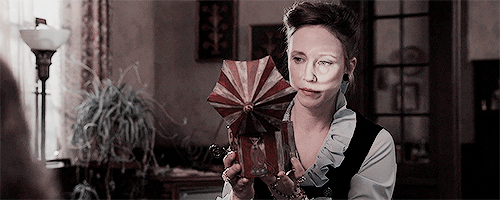
See, what matters here is that a man is possessed.
From the dozens of films I have sat through, I can think of few that actually involve men being possessed.
And that’s why I fucking love this movie:
The film ends by overturning misogyny, and it’s this ground-breaking male possession that kickstarts the whole Conjuring series!
They may not have defeated Valak, but they defeated the misogyny inherent in horror films.
***
This film will go down in the reviews section as a trope-filled-jumpscare-ridden-basic-bible-bitch- film.
But it’ll go down in history as a feminist icon.
(Well, to me, anyway.)
Now it’s time to hear what you think:
Do you think The Nun is the feminist icon we all need?
And are there any other feminist horror films that we gotta know about?
#halloween#halloween costumes#the nun#the nun 2018#the crooked man#true#true story#based on a true story#horror movies#horror film#halloween 2018#halloween 2019#the conjuring#the conjuring 2#ed and lorrain warren#horror movies 2018#horror movies 2019#the nun movie#the nun imbd#feminism#feminist#feminist films#metoo#me too movement#valak#carrie#the exorcist#paranormal#supernatural#haunted
32 notes
·
View notes
Text
WARRIOR NUN!
Just a reminder to watch Warrior Nun, and once you've watched it, watch it again, and again, and again. You don't actually need to r3watch it, just set it up on your phone, tv, laptop, ipad etc and let it run. Also, "rewatch" season 1.
Go and rate it on Netflix, IMBD etc. Tweet about it, tag it in tumblr, facebook whatever.
We need to make a lot of noise so we get our season 3! Netflix is notorious for canceling shows with wlw representation, and I don't know about you, but I really need Ava and Bea to find their way back to each other!
Let's do it!

#warrior nun#avatrice#avatrice fanfiction#ava and bea#netflix#queer tv#LGBT tv shows#LGBT#LGBTIA#wlw#wlw tv shows#lesbians#bisexuals#so gay#gay
310 notes
·
View notes
Text
Can we talk about how important this tweet is for a second?

I'm gonna say this again once a Trailer for Season 2 drops but this person is absolutely right and it reminded me of something @ground-zoro posted a while ago:
Netflix does NOT put enough work into promoting Warrior Nun, it is up to us fans, I think someone on the production team even mentioned that they only got renewed because Netflix saw how dedicated the fans of this series are. Things we can do are listed down below, feel free to add :)
The plot of Warrior Nun develops relatively slowly compared to other shows on streaming platforms. Normally we have a clear "team" and clear team dynamics by episode 3, and the couple gets together either in the middle or at the end of the season and the end goal of the protagonists is also clear very early on. Because streaming platforms want audiences to binge watch, there isn't really time for good slowburns or for the 'real conflict' / 'real enemy' to be revealed later on.
This slow pace was one of the things reviewers didn't like on Rotten Tomatoes or IMDB and maybe WN also lost some viewers who didn't complete the first season because only at the end of S1 we have all those things I listed above.
Warrior Nun has potential and I think it needs and deserves at least 3 or 4 seasons to tell its story, our job is to make sure that happens and these are some things we can do:
▪︎ once a trailer comes out we need to promote it online as well as offline so that even people who only watched Season 1 casually remember the show and come back for Season 2 (ergo WN doesn't lose viewers)
▪︎ once the episodes are out we should watch them within 28 days, complete the season and if possible, watch more than 2 episodes directly after another!!!(This is something that the Netflix algorithm really likes)
▪︎Rewatches also help
▪︎ If you have access to other Netflix accounts, watch WN on them and give a positive rating. You can mute your laptop/TV while doing homework, workouts, work, etc.
▪︎ make TikToks, Twitter and YouTube edits and memes of Ava and Beatrice (add more moments from S2)!! THIS IS A VERY IMPORTANT STEP! We all know that queer people watch stuff with queer couples in it and often you find out that there's a wlw couple on social media. The wilds on Amazon Prime, for example, partly became so popular because people already knew that they could expect a lesbian couple (Shelby and Toni) in it because they saw them on TikTok.
▪︎ don't only promote Warrior Nun in English but also in your native language/ the languages that you speak. One of this show's biggest strenghts is that it was able to get many views from non-english speaking countries and we should take that into consideration.
▪︎ spam the RenewWarriorNun Hashtag on Twitter
▪︎ leave a good rating on Netflix
▪︎ leave good reviews and ratings on IMBD/Rotten Tomatoes etc. and point out the strenghts of the show and that S2 (hopefully) ties the events of S1 together.
Strenghts of the show are: queer representation in the form of Avatrice as well as Mary, Shannon and Chanel, the scenery, cast diversity, multiple languages are spoken, fight scenes/ action, an overall feminist theme, the theme of dealing with catholic trauma, A BADASS SISTER BEATRICE DAMN, the show doesn't shy away from using swear words, the humour, etc.
▪︎ when you see ppl looking for show reccomendations (with queer representation) on TikTok, Tumblr, Twitter, etc. recommend Warrior Nun in the comments, bring it up so that people will see the title of the show more often.
▪︎ when recommending the show, remind ppl that the plot of the show/ the romance isn't supposed to feel rushed and that by watching the show they contribute to a renewal.
Because productions in Europe, especially Spain, are often cheaper than productions in the US I hope that Netflix won't be too hesitant to renew Warrior Nun for a third season, especially after Warrior Nun was in the Netflix Top Ten (I think) in many countries after it came out so it is our goal that S2 can reach that status as well.
Thank you all, I think Warrior Nun has an amazing fandom ⚔
#avatrice#warrior nun#netflix#shotgun mary#halo#ava silva#sister beatrice#wlw#wlw representation#queer#lgbtq#lgbtq shows#tv show#nuns#wlw couple#representation#alba baptista#kristina tonteri young
263 notes
·
View notes
Text
Top 10 TV Shows You Need To Watch Right Now

Now, I watch a lot of television. I always have and frankly, I’m much more of a binge watcher than a wait-around-for-a-week-for-the-next-episode kind of watcher.
And with everything the past few months, there wasn’t all that much to do other than start rewatching some of my favorite shows and some that I’ve never seen or haven’t seen in a while.
So, that’s what I did and here I am giving you some recommendations for shows to add to your own watching lists.
Warning, though, some of these don’t end the best way and may end up more as a disappointment. I’ll leave that up to you to decide.

I. Fringe.
I cannot recommend this show enough to people. It’s got five full seasons (although the last could’ve been a little better, but it’s honestly not that bad of a final season) of high-risk scenarios revolving around almost unexplainable phenomena regarding a tear in the fabric of reality. It deals with experiments that gives superpowers (basically), advanced technology, and a parallel universe.
Plus, there’s a cow.
What more could you want from a show?
Some familiar faces that are in the main cast or show up at some point include John Noble, who you may recognize from Sleepy Hollow and The Lord of the Rings: The Return of the King, Lance Reddick, who was in The Wire, White House Down, American Horror Story, and played Charon in the John Wick franchise, Leonard Nimoy, who you should know from the original Star Trek series, and Anna Torv from Mindhunter.
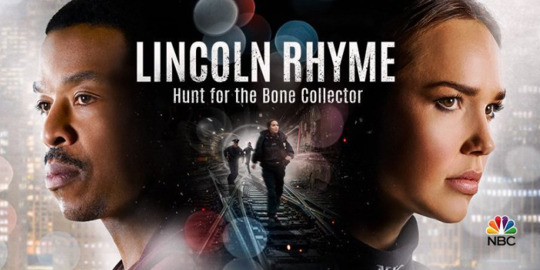
II. Lincoln Rhyme: Hunt for the Bone Collector.
Now, if you know crime books, you may know exactly what this is based off of. If not, fear not, I am here to tell. This series (which, like a lot of the others down the list, unfortunately, got cancelled and won’t get to see a second season) was based off of The Bone Collector, a first in a series of novels by Jeffery Deaver.
If you like crime shows, you should definitely give this a shot. Don’t let the fact that it’s only one season stop you.
Things get pretty wild in just one season as it revolved around a retired forensic criminologist, who had been trying to catch the Bone Collector only to get injured, that gets back into the game three years later when an ambitious young detective is determined to help solve the case when a new body shows up.
You might even recognize a face or two, like Arielle Kebbel (the ambitious young detective) from her role as Lexi in The Vampire Diaries and Olivia Charity in Midnight, Texas, and Russell Hornsby (the retired forensic criminologist) from Grimm, The Hate U Give, Proven Innocent, and The Affair.

III. Manifest.
Luckily, this show is said to be getting a third season and so far, isn’t going to get cancelled. It focuses on passengers from Flight 828, who show up five years after their plane went missing. Some passengers start experiencing what they call ‘callings’ and try to figure out if they were chosen for some sort of duty that the callings led them too, but things get a little confusing when someone who wasn’t on a flight seems to have a year missing of their own life after being deemed missing.
Things get a little weird and dangerous along the way, and not everyone is happy about how things turn out.
It’s pretty interesting and I’m really looking forward to what else they come up with. There’s a few familiar faces that play a part in the show that includes Daryl Edwards, who you may recognize from the first season of Daredevil, Ellen Tamaki who is also in the reboot of Charmed, Athena Karkanis, who’s been in The Expanse and Lost Girl, and Josh Dallas, who one may recall playing Prince Charming in Once Upon a Time, and Fandral in Thor.
It’s a rather good show to get lost in and I definitely recommend giving it a go.

IV. Agents of S.H.I.E.L.D.
If you don’t have an idea as to what this show is, I don’t know what to say. The title kind of gives it away. It’s the only Marvel Show (as of now since none of the shows in production have come out as of yet) to technically be connected to the MCU itself.
That’s found in one of the main characters, Phil Coulson, who you’d recognize from Captain Marvel, Iron Man, Iron Man 2, Thor, and The Avengers. Plus, Cobie Smulders (Maria Hill) and Samuel L. Jackson (Nick Fury) both give a cameo in the show.
The show was rumored to have been set in a different, but similar, timeline to that of the MCU movies, but I don’t know for sure if it’s true or not.
It follows its own set of issues, including a deeper dive into the fall of S.H.I.E.L.D., issues with HYDRA, and so on and so forth. The last season, which I honestly cried during, gives such good twists and callbacks to previous seasons and the MCU movies that you can’t help but enjoy how it’s handled.
As a show, it probably has one of the best final seasons possible and I highly recommend giving the full seven seasons a watch if you haven’t already.

V. Primeval.
Now, if you like dinosaurs, this is a show for you. It’s BBC, so obviously everyone has an accent. It gave a run of five seasons (which is kind of funny because I didn’t realize that until just now writing this as the show is listed as number five on the list) with different episode amounts.
The show centers around anomalies that seem to open up a window to the very distant past of Earth when dinosaurs still roamed the land. It causes a lot of issues, especially if one person has anything to do with it.
It’s pretty interesting and honestly has got some great characters (my personal favorite is Captain Becker, played by Ben Mansfield) and while it can get pretty serious, it’s also pretty entertaining. It’s one of the three shows on this list to get to end on a good-ish note. (AKA, no cliffhangers!)
Obviously, I highly recommend giving it a shot. It’s kind of the point of this list.

VI. Terra Nova.
Now, like Primeval, this show technically has to do with dinosaurs. Dinosaurs aren’t the main focus, but they do play a part in this one season (because cancellations) story.
Terra Nova is focused on both the future and the past. In the distant future (2149), the Earth is dying. A group of people, researchers, and military as well as some of their family members, are sent to the past (85 million years) to inhabit Terra Nova, a colony of humans given a second chance to build civilization.
So, obviously, dinosaurs are going to make an appearance now and then. And unfortunately, the show only got one season and ends on a cliffhanger. Which I hate, because I really enjoy this show and wish it had been able to at least get a second season.
Plus, there are some familiar faces amongst the cast. Jason O’Mara, who plays one of the main cast members, played Jeffrey Mace in Agents of S.H.I.E.L.D.. Christine Adams, who plays Lynn Pierce in Black Lightning. Allison Miller, who played Sonya in 13 Reasons Why. And Naomi Scott, who is known for her roles in Lemonade Mouth (one of my all-time favorite DCOMs) and Aladdin. And this was just to name a few of the cast members.
Shame it got cancelled, truly, but I recommend giving it a shot.

VII. MTV’s Scream.
I think you can figure out the basis of this show. While it doesn’t have anything to do directly with the movie franchise, it is kind of similar and a lot of the characters reflect those from the show. Neve Campbell even said that if the show did well, she would be willing to do a cameo.
It revolves (at least the first two seasons as season three is an entirely different set of cast and premise that I refuse to watch because of that) around Emma Duval and her group of friends as they’re picked off one by one by a serial killer going around town. Things get bloody and suspicions arise amongst the crew when things are revealed as the show continues, but things eventually work out in the end.
And personally, I really enjoyed the show even when the second season ended on a cliffhanger. I have theories about that cliffhanger, however, so watch out for a possible post regarding it.
I highly recommend giving it a chance if you haven’t seen it.
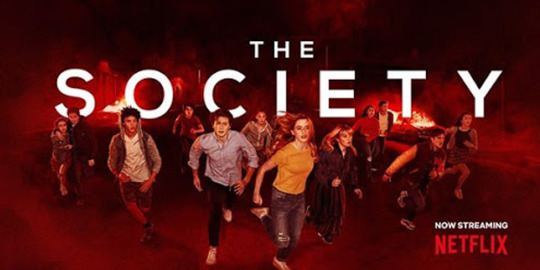
VIII. The Society.
Now, the title doesn’t give you much. A group of teenagers, who were sent off on a trip, suddenly are dropped back off in their town to find it completely empty aside from themselves. They have to form their own society to survive and figure things out.
Once you know that, it makes a little more sense.
It seems really similar to the Pied Piper tale, but it doesn’t seem like we’re going to really know for sure. Season 2 had been given a go-ahead, but not too long ago Netflix announced the cancellation of the show.
That doesn’t mean you can’t enjoy the first season like I do. Plus, if you’re a fan of Supernatural and the character of Claire Novak, Kathryn Newton plays one of the main roles in this show.
It’s a shame the show got cancelled, especially on a cliffhanger, but what can we do?

IX. The Mysteries of Laura.
Laura Diamond, a Homicide Detective, cracks case after case while trying to raise twin boys and locking horns with her less than helpful Police Detective ex-husband. At least, this is according to IMBD and frankly, it’s not really wrong.
For two seasons, it’s packed with comedy and crime. It’s more of the former, but it still gets pretty serious every now and then, and unfortunately ends on a cliffhanger.
However, some cast members may be familiar. Like Josh Lucas, who voices Home Depot commercials (and trust me, it made my family laugh when we first heard one after watching the show), Laz Alonso who plays MM in The Boys, and Debby Ryan, from Disney Channel.
If you like light-hearted crime shows (like Brooklyn-Nine-Nine) you should definitely give this a watch.
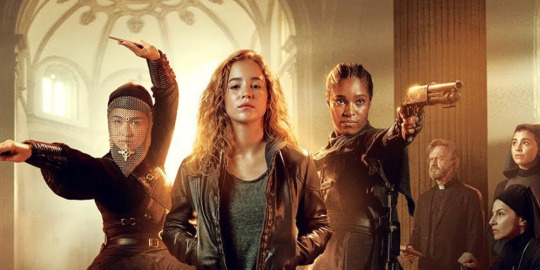
X. Warrior Nun.
As far as I know, this show has been renewed for a season two. I’m really hoping for it because it’s honestly kind of interesting. You can kind of tell by the title what it may be, but I’ll dive a little deeper.
After waking up in a morgue, Ava, an orphaned teen, discovered she now possesses superpowers as the chosen Halo Bearer for a secret sect of demon-hunting nuns. (Taken from IMDB). Interesting, right?
With characters like Shotgun Mary, Sister Beatrice, and Sister Lilith, you know the show’s going to be interesting. But the premise is pretty interesting on it’s own too.
There’s even a character called JC, who apparently has nothing to do with Jesus Christ, but I still like referring to him as such because it’d be pretty funny if that’s how it turns out. Also, someone gets beat up with a whole chicken at some point.
It’s only got the one season so far, but it’s pretty funny and action packed. Like everything on this list, I definitely think you should watch it and find out for yourself if you want to add it to your list if you haven’t already.
#tvshows#watchlist#warriornun#fringe#mtvscream#thesociety#primeval#terranova#themysteriesoflaura#aos#agentsofshield#manifest#lincolnrhyme#qsdblogging#qsdbloggingpopculture#qsdpopculture#findingqsd
9 notes
·
View notes
Text
My Top 10 Favourite Horror Films of 2020
Every January, most people who review or talk about movies on YouTube tend to piece together a Top 10 list of their favourite movies from the year prior. In order to stand out from the crowd (and also because I was too lazy to do this sooner), I decided to wait until March, by which time most YouTubers aren’t really talking about movies from 2020 anymore.
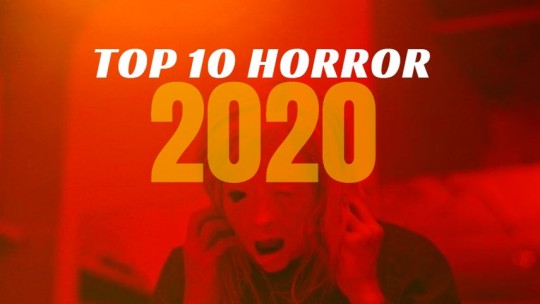
I know what you’re thinking: sounds kinda stupid – why would anybody care about a Top 10 list of the best movies of 2020…THREE months into the new year!? Well, as you’ve likely heard, 2020 was a year like no other, and as result of the ongoing global pandemic, movie release dates from 2020 were pushed back months, sometimes multiple times. Some films that were supposed to be released last year didn’t arrive until 2021, even though they’re officially considered “2020 films,” according to their profiles on websites like IMBD and Letterboxd.
And so, some of these so-called “2020 films” were not available (at least to me) until only recently, such as Saint Maud or The Dark and the Wicked. I feel like I’ve now had a chance to see almost all of the horror films I’ve wanted to see from last year. In this video, if you care to stick around, I will share with you my Top 10 favourite horror films of 2020. So, here we go…
#10/ The Dark and the Wicked:
A sister and brother return to the family homestead where their father is slowly dying and their mother is understandably distraught but also disturbed and distant. The siblings soon realize that something evil has invaded their family home as they are terrorized by whatever is slowly killing their father. Directed by the same guy behind 2008’s The Strangers, The Dark and the Wicked is at times bleak and unsettling, and it does a good job at keeping you intrigued in this family’s unnerving conflict. However, it felt a bit rushed and undeveloped at other times, and its ending left me somewhat unsatisfied.
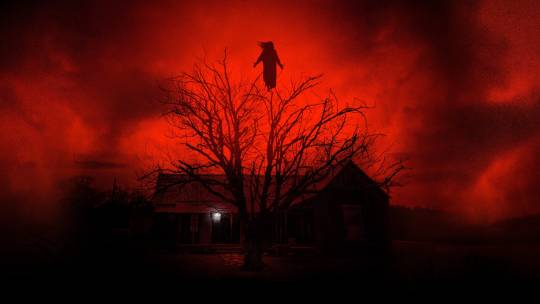
#9/ Relic:
Soon after Kay and her daughter Sam return to their remote family home following the disappearance of the family matriarch, the widowed Edna, they discover that something sinister has taken hold of both Edna and the house itself. Although Relic – which was co-produced by Jake Gyllenhaal and marked the feature directorial debut for Natalie Erika James – isn’t exactly offering up any enticing twists or salacious gore, or even a original concept for that matter, it relies on evoking dread and building tension to compel its audience to stay invested until the bitter end.
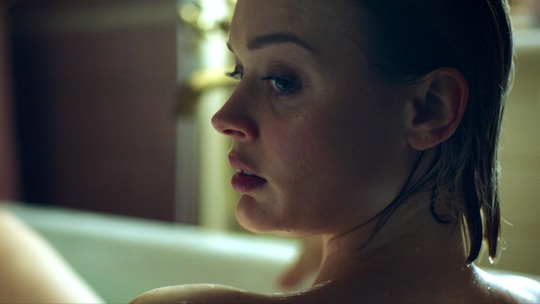
#8/ Amulet:
Taking its sweet time to unravel, Amulet is centered around Tomaz, an ex-soldier who is now homeless but is offered a place to stay at a decaying house in London, which is inhabited by a beautiful young woman named Magda and her dying mother. As the story moves along, we see that Tomaz is starting to develop feelings for Magda, who seems a bit…off. His feelings for her don’t wane even after Tomaz discovers that there’s something insidious going on in the attic of the house, where Magda’s mother is seemingly imprisoned. Toss in a suspicious nun and you’ve got yourself a creepy little film that seems to have fallen between the cracks.
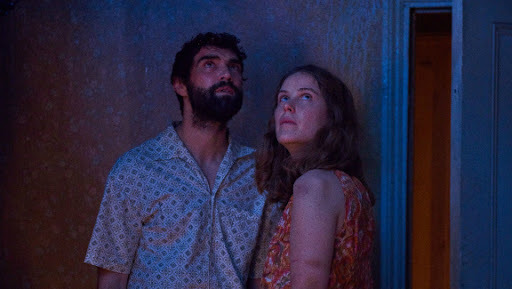
#7/ The Beach House:
One might argue that not a lot actually happens in The Beach House and that the payoff isn’t worth the investment, but if you go into this film with an open mind and zero expectations, you should at least be satisfied. Two troubled college students head to a deserted beach getaway to spend some time together, but end up struggling to survive alongside some unexpected guests as a mysterious infection disrupts their holiday. Although it is a slow build up to the film’s climax, it is a tense and intriguing ride along the way, as a series of unsettling events give way to an apocalyptic episode that feels almost like a throwback to the sci-fi films of the 1950s. Making his feature film directorial debut, Jeffrey A. Brown elicits with The Beach House those brooding existential thoughts that lay dormant in the deep boroughs of our minds.
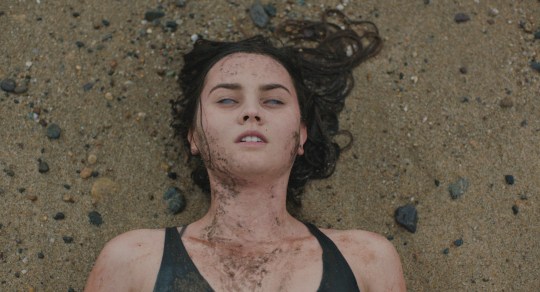
#6/ The Invisible Man:
There’s always an elevated risk when making a modern film based on an old story that has already been told through cinema numerous times before. The last time H.G. Wells’ 1897 novel The Invisible Man had been adapted by Hollywood was in 2000’s Hollow Man, which was panned by critics despite making a sizeable profit. The 2020 adaptation is far superior and is perhaps the best adaptation of Wells’ classic in any medium. Elizabeth Moss gives a stellar performance that draws real emotion, so that we agonize alongside her as she is essentially haunted by a relentless ghost hellbent on controlling every aspect of her life. We live in an era when technology has advanced enough to bring this 124-year-old story to life like never before, while a polished script and an exceptional lead performance gives The Invisible Man a deeper level of emotion and terror.
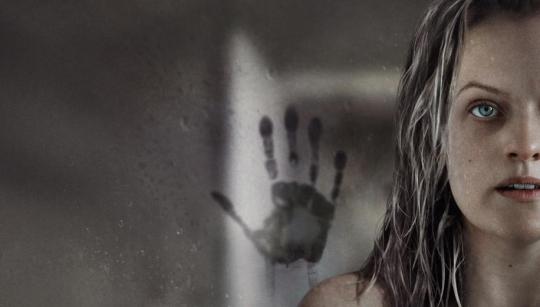
#5/ Saint Maud:
For most of Saint Maud it is unclear whether certain experiences are actually happening in reality for the main character or if it’s all simply in her head, as some sort of mental breakdown caused by a work-related tragedy. Maud is a young hospice nurse and a newly-converted Roman Catholic who suddenly becomes obsessed with “saving the soul” of the woman she is currently taking care of, Amanda, a hedonistic dancer with a chronic illness. Maud’s behaviour worsens, as does her mental state, as horrific scenes and visions make us question if she’s actually losing her mind or experiencing something beyond this world. Saint Maud is an A24 feature by the way, so that should be enough to know what you’re getting here in terms of quality.
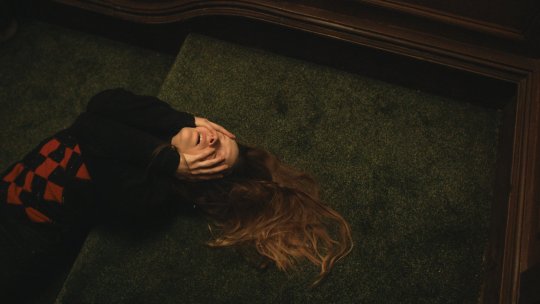
#4/ The Lodge:
Isolation is often embraced as a way to pad a horror film’s fear factor, and it works especially here in The Lodge, as a soon-to-be stepmom becomes stranded at a remote holiday home in the middle of winter with her fiance’s two children. The kids begin to untangle the dark past of their stepmom-to-be and a series of disturbing events transpire as their hope for survival fades. The Lodge is a dreary, atmospheric slow burn that leaves you somewhat unsettled. With its wintry backdrop, stylish sequences, and almost claustrophobic dread, the film doesn’t ever allow its audience to feel at ease for long, insisting that an underlying foreboding remain intact throughout. Although I found the ending somewhat disappointing, I immediately began to concoct a possible prequel that would delve into the backstory of the film’s lead character. One can hope.
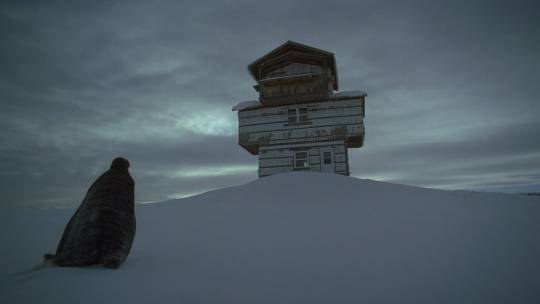
#3/ Host:
It’s increasingly difficult to be innovative and original when it comes to horror films these days, especially in the particular genre of so-called “found footage.” Rob Savage’s Host, however, comes off as something different, setting itself apart from most films in this realm in various ways. It centers around six friends who hold a séance via Zoom during a COVID lockdown, guided (at first) by a medium they hired. The séance then takes a dark turn and things soon escalate into madness. Sure, there are elements in Host that are prevalent in numerous horror films, but it uses a modern and topical way to implement them, while also refusing to overstay its welcome by cueing the credits less than an hour in. Overall, this film’s popcorn-and-Saturday-night-movie fun factor is why it ranks so high on this list.

#2/ Possessor:
It’s always a treat to come across an original idea, especially when it’s within the horror realm, and Possessor is certainly unlike anything else I’ve seen in awhile. Andrea Riseborough plays an elite corporate assassin who uses brain-implant technology to take control over other people’s bodies in order to kill high profile targets, though with every mission she gets further and further away from her true self. With her latest possession, she becomes trapped in the mind of a man who threatens to obliterate her for good. It is a provocative vision by director-writer Brandon Cronenberg, who just so happens to be the son of legendary Canadian filmmaker David Cronenberg, and it serves as a disturbing piece of dystopian fiction that is even more frightening because it isn’t too far beyond belief.
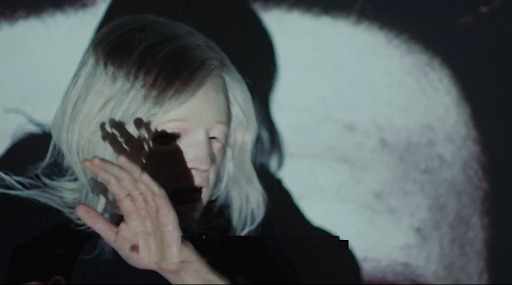
And because everyone else is doing it, here are five honorable mentions that narrowly missed the list:
- The Call
- Color Out of Space
- Don’t Listen
- The Mortuary Collection
- Porno
#1/ His House:
In addition to its emotional storytelling and genuine moments of terror, His House – from first-time director Remi Weekes – sheds a light on the plight of refugees in a way that feels both respectful and empathetic. After a Sudanese couple make a harrowing escape from their war-torn homeland, they are granted asylum in England, where they struggle to adjust and fit in. They are assigned a shabby house on the outskirts of London, where the couple begin to experience terrifying and unexplainable events. His House is built around a fresh concept, two fantastic leads, and some truly haunting imagery, and I wish that more horror directors would put as much effort into quality filmmaking as Weekes did here. If this is his first venture into feature filmmaking, I am excited to see what his future has in store.
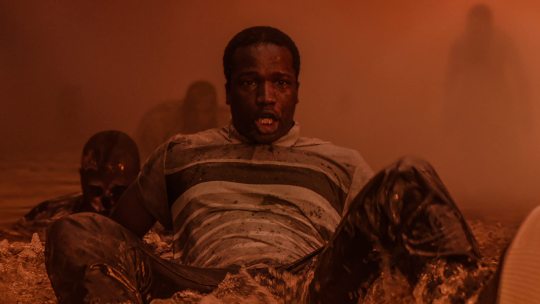
There you have it, my Top 10 favourite horror films of 2020. What did you think and were any of these titles on your own Top 10 list? Please tell me your thoughts and recommendations in the comments below.
youtube
5 notes
·
View notes
Text
Verónica
So I'm going to preface this text post with a bit of a spoiler warning, as I will be going over the entirety of the movie's plot. Anyway, I first heard of "Verónica" via Facebook article that essentially hyped up the movie. For those of who haven't seen the article, it basically says it's so scary that people had to stop watching about halfway through the movie. So, of course, my friends, Anne and Gene, are pretty excited to see it. It is also mentioned elsewhere that the movie is supposedly based off of a true event that happened in Spain, so that adds to the horror element. Without further ado, let's get into it.
The movie is about a girl named Verónica that decides to play with a Ouija board with her friend Rosa. Rosa invites a girl named Diana to join them in their seance during an eclipse. Now, with a Ouija board, especially in the movies, when you're done and you want to leave, you have to say "good-bye". A cliche in horror movies that involve Ouija boards is that the characters in the movie never say "good-bye" and of course, some spooky shit goes on that ends up killing at least one of the characters. That's exactly what happens, thr Ouija board breaks, and Verónica gets possessed by a demon because why else? Diana runs to get help while Rosa stays with Verónica, who is whispering things, to which is later revealed to be saying "I will die on Saturday" or something along those lines. Verónica is taken to the nurse who passes it off as a possible blood pressure issue and that she should eat red meat for dinner that night. When school ends, Verónica meets her siblings and go to the bar where their mother works. Before going, Verónica makes the children swear not to tell their mother why she went to the nurse's office.
That night, during dinner, Verónica has some issues trying to eat, as she freezes her hand and begins to shake, inching closer to her mouth. When her sister drops a carton of milk on the floor and the milk spills over to her foot, she snaps out of a trance and spits out any food in her mouth, and continues as if nothing happened. When she attempts to fall asleep, she ends up having a nightmare where hands come out of her mattress, keeping her bound while a demon comes and attempts to sacrifice her. She wakes up after the nightmare to find her little brother, Antoñito, standing at the foot of her bed, saying he wet the bed that night. Realizing what time it is, she rushes to get her and her siblings ready for school that day where Rosa seems to be ignoring Verónica and talking more with Diana. Excusing herself to the bathroom, Verónica rushes to the room where the girls had the seance to be startled by a blind nun at the school, whom most students have come to address as Sister Death. She tells Verónica that she knows what she did and that she needs to protect her siblings. After school she confronts Rosa about her absence with her and says her parents are away for the weekend and will throw a party on Saturday. Verónica asks why she wasn't the first to know when Diana butts in and says she's telling you now. Verónica runs off after being treated horribly by her friend and runs back home.
Unsure of what to do, Verónica looks through her various magazines on the occult to see how she can protect her siblings. She sees a symbol the Vikings supposedly used to protect themselves against spirits and demons, and draws it on a piece of paper to protect her sisters and brother. That night, she sees a demon in her sisters' room and she rushes to their room to see a shadowy figure creepily making it's way closer to her sister and choking her. To stay safe from the demon, she wakes them up, and tells them they will sleep in the living room, to which their mom walks in later that night and tells everyone to go back to their respective rooms. It is at this time that Verónica tells her mother that she attempted a seance with her friends to attempt to contact her deceased father. Her mother is obviously upset at this and tells Verónica that she needs to stop with the nonsense and go to sleep. The dream she has this time is her siblings, possessed, biting her wrists, also attempting to sacrifice her. She screams for her mother, who appears in the dream and does nothing to stop the torment. She instead reaches across Verónica's body and squeezes her hand over her lower body and makes it seem like Verónica is having her period.
Verónica wakes up screaming but seems to be fine, other than a couple bit marks on her arms. She looks on the mattress and it looks like she is experiencing her first period, but she flips her mattress to discover that she is not, but her body imprint burned on the underside of the mattress. She does the same to her siblings' mattresses and the same is on theirs. Preparing her siblings to go to their mom's work, she sees her little brother with an open book. She mentions that he cannot read, but he tells her that their dad read the book aloud to him. Verónica instructs him to never listen to whoever is saying they are his dad and to cover his ears and to yell for Verónica should this happen again. After preparing the kids. She drops them off and rushes to school to speak with Sister Death who tells her to right her wrongs. When another sister comes into the room, Verónica tells her that Sister Death was just helping her with a project. Before leaving, Sister Death tells that the books will have the answer she is looking for. Verónica rushes to Rosa's house with a new Ouija board and occult books explaining that they need to redo the seance because they failed to say good-bye during their last seance. Rosa let's Verónica know what she heard in the basement and essentially abandons her, to die on her own. Frightened, she gets the kids from her mom's work and decides to attempt to fix the problem with her sisters. Her sisters help set up the seance while she has her brother draw the symbol from before all along the walls, however the page changes and Antoñito, being illiterate, draws not a symbol of protection, but a symbol of invocation.
The seance seems to work until the door opens and closes on the siblings frightens them. A cup rolls down the hall to her sisters' bedroom where the demon can reach the family. Verónica calls the police to save the family, but then Antoñito is kidnapped and Verónica rushes to save him. She falls on the bathroom floor and is knocked out for about a minute or so. She wakes up to see Antoñito sitting next to the tub; she grabs him and her sisters and they rush out of the building. When they reach the exit, she realizes that she no longer has Antoñito as the demon makes her believe she has him, but does not. She locks her sisters outside as she rushes up to save her brother. She runs back to the bathroom where she sees the demon take Antoñito and their shadows morph to form the actual demon. She runs back to her room to escape it where she finds the real Antoñito in her closet, plugging his ears and calling Verónica's name, just as she had instructed earlier. She realizes that she was the demon the whole time, that she was the one who almost choked her sister, and messed with her brother's bath, and various other incidents. The police find Verónica in a contorted position but still alive. They take Antoñito downstairs to their mother and get her on a gurney; she dies on the way to the hospital.
All of that being said, there are almost no noteworthy scares in this film, although the transitions and cinemaphotography are excellent. Neither me nor my friends felt scared at all, and felt a little overhyped on this movie, and extremely let down. That being said, it currently has a 93% approval rating on Rotten Tomatoes and a 6.5/10 rating on IMBd as of the posting of this. This is just my personal opinion of the film, however and you are free to feel how you will about it. I wouldn't say I am not an avid fan of horror films but I do like horror films, and unfortunately, there are some films that do not live up to their hype, and that's okay.
Feel free to reply with how you currently feel about the movie and if you disagree with my opinion, that's totally fine, however, I ask that you remain civil about it. Can't have people getting into ugly arguments because they can't agree to disagree.
16 notes
·
View notes
Text
The Haunting of Borley Rectory - The Most Haunted Places in The World #1
Essex is home to many frightful things: Southend Airport, the cast of TOWIE, and most contestants of Love Island to name a few. Yet amongst the thick accents and the eyelash extensions is something nearly as terrifying as a death stare from Gemma Collins herself: Borley Rectory.
Unfortunately, this rectory will never be quite as famous as the GC herself.
But among paranormal fanatics, no #diva can ever take the place of the most haunted building in Britain, or rather, what has even been deemed one of the most haunted places in the world. And sure, this touristic trope is slapped on the websites of most historic places, but today’s post is dripping in real ghost stories, and the most famous paranormal investigation in UK history.
This label was applied by the investigator, Harry Price, himself, yet due to the sheer volume of stories relating specifically to this period of the rectory, his investigation will receive its fair share of attention in a later post.
So, if you clicked for Price and his official investigation, be sure to follow this blog and be updated when that is up for discussion.
Today however, we are going to just be talking about the haunting of Borley Rectory.
In 1939, Borley Rectory was burnt down.
Well, I say burnt down: the damage was so significant it was eventually abolished 5 years later, concluding its short life. Built only 76 years prior to this, its history has been ingrained – or rather, trapped – within its walls for what is rumoured to be centuries.
It might not match the ancient ages of the typical haunted houses clogging up the IMBD horror pages, but it is thick with historical tales which certainly contain the real ghost stories we are so interested in.
And it is one of these tales that gave birth to the first recorded haunting of Borley Rectory.
This tale takes us back to 1326, 500 years before its construction: it was rumoured that a nun and Benedictine monk had a secret relationship together, a relationship that was obviously forbidden. Upon discovery, the monk was executed for his sins, yet I’m afraid the nun suffered a far worse fate.
She was bricked up – alive - in the walls of her convent.
However, as the stories go, the nun’s afterlife was a little more mobile than her final moments.
It was a warm July evening in the year 1900 when she was first seen. The daughters of the rector were enjoying those summer nights (think more dead clergy-people, less John Travolta), and saw a figure make its way across the lawn. They tried to talk to it, to get closer to whatever this thing was, yet it disappeared the closer they got.
But this would not be the only time they witnessed the ghost of the nun.
One June afternoon they claimed they clearly saw a figure resembling a nun make the same journey across the lawn, even though she had only ever been witnessed during the night. One of the three sisters there ran into the rectory to find her fourth sibling to confirm this apparition, and all 4 of them were sure that she slowly walked across the lawn, disappearing as she finally reached the trees.
More than 20 people have expressed similar claims, with one man who had no prior knowledge of the rectory’s reputation inquiring about the nun wandering outside of the house.
It has even been said that she was once again witnessed mere weeks before the rectory found itself reduced to ashes.
This is possibly the most famous apparition of the haunting of Borley Rectory, but allow me to make one thing very clear: this was not the only ghost to lodge there.
It is here that we turn to the family in residence for the Rectory’s first 30 years: the family of Reverend Henry Bull.
The first paranormal activity was reported a mere year after they first moved in, but it wasn’t actually from those that lived here. Locals recall hearing footsteps behind them whilst near the house, and even stated that phantom coaches being pulled by headless horses was a frequent sighting.
But despite the various haunted horses galivanting in the moonlight which certainly fit the bill of one of the ‘most haunted places in the world’, footsteps were a key component of the haunting of Borley Rectory.
The son of the reverend – who spent most of his years at sea and thus would have limited knowledge of the claims – on many occasions matched such stories of footsteps outside of the house, often hiding in attempt to catch the perpetrator.
However, the perpetrator was never to be found.
Eventually, the local villagers refused to walk past the house after dark, particularly if they were alone.
Nevertheless, the hidden figures would also make their way inside the house. Footsteps were heard all over the rectory, but mainly in the bedroom passages. It is claimed they would reach a door, pause for just a moment, produce 3 sharp taps, and move on.
And even though invisible figures clearly made the rectory their home, there is also a smattering of visible figures.
The reverend often told his family, perhaps while at dinner, or in letters to his son overseas, that he had once again seen the Little Man.
He claimed a dwarf-like figure of an old man would appear on the lawn. He would then raise an arm over his head, and run towards the drive, disappearing as he rushed away into the distance. His wife even went on to confirm this particular sighting.
These real ghost stories clearly took a toll on the family; a dining room window was even boarded up due to reports of an apparition peering in during meals.
Indeed, it appears each individual member of the family would have their own dealing with the dead at Borley Rectory, for example, one of the daughters awoke to a slap on her face several times in the many nights she spent there.
But the haunting of Borley Rectory went far beyond the things you could see.
The groom-gardener and his wide often heard rattling in the house, with knocks and breaking crockery sounds echoing down the halls of the rectory nightly. And despite the shattering sounds, nothing was found to be broken or even cracked in the morning.
After 3 years of these incessant disturbances, they left.
Yet they would not be the only residents to have unfavourable memories of their home – Reverend Henry Bull stated the years residing at the rectory were ‘the darkest years of their life’, a claim not impossible to comprehend given the sheer volume of hauntings noted.
As is clear from the majority of reports made of the paranormal activity, noises were a prevalent occurrence, and were found to be either in all rooms at the same time, or following the residents about. Nevertheless, it is claimed that the sounds were incessant in the room just over the kitchen, or the blue room which just happens to overlook ‘the Nun’s Walk’.
Reverend Henry Bull died in 1927, and he died in the Blue Room. As did his wife, and his son.
The following residents – the Smith family – did not have to wait long until the paranormal visitors welcomed them to their new home.
Shortly after moving in (before they’d even finished unpacking their boxes), Reverend Guy Eric Smith’s wife opened a cupboard to find a brown paper bag.
And inside this bag? The skull of a young woman.
After the skull was found, the paranormal proliferated, with lights appearing in windows, or servant bells ringing into the silent nights despite not being connected to anything. The footsteps also began once again.
The reverend’s wife even recalled witnessing a horse drawn carriage as she peered out the window one night, a sighting we have already discussed.
Following these events, the Smiths decided to take matters into their own hands, and contacted the Daily Mirror, asking for assistance from the Society for Psychical Research. It was in 1929, on a warm June day, that a reporter arrived at the rectory and made his case for the haunting of Borley Rectory. This was to be one of first of many articles to be published on the goings-on.
This is also when Harry Price – a paranormal researcher – turned up, and made his first visit to Borley Rectory. This would not be his last.
The reverend made many claims to Price, most notably that the noises proliferated in the winter months, and occurred more frequently at night, and obviously claims that are easily dismissible and seem to turn up in cases all too frequently.
Yet despite this, the wide berth of activity still needs to be considered.
Keys, for example, were frequently picked up and placed in the locks by unseen forces, or moved about the room from which they were kept. The key to the library was a victim of this, and was often found at the foot of the stairs or several feet from the door. It was even recorded that an hour would elapse before it was once again found on the floor.
And on this, unlocked doors were often found to be locked to the chagrin of the residents. On one occasion, one of the observers who was residing in the library even heard a click, only to see the door was locked from the inside.
It was also common for keys to go missing, and such keys were not to be found again.
The library seems to be the seat of some of these real ghost stories, and I’m afraid it doesn’t end with the key in the lock.
The Smiths told the investigators that the heavy wooden shutters to the French windows were often pulled together by invisible forces. These shutters – as they were 6 feet high and 3 feet wide – were clearly quite a feat to close, even by those with who were, you know, alive. They had even been sitting in the library when it once occurred.
Yet it appears one of the most curious and prevalent paranormal occurrences, even after the Smiths left the rectory, was the tapping of Mrs. Smith’s dressing table mirror.
They deduced it came from the back of the mirror, and it was only after they moved out of the house and lived on the east coast of England that the tapping finally stopped. Yet after Price visited the family in their new home, the tapping began once again.
Following this event, Mr Smith died after falling seriously ill, an occurrence often found of those that were once the reverend of the rectory that contained so many real ghost stories.
The following owners – the Foysters – would be the family at the centre of the paranormal investigation lead by Harry Price, and it was after their departure in 1937 that Price rented out the rectory for his own personal study of the haunting of Borley Rectory.
This would feature as one of the most famous – and hotly contested – paranormal investigations of one of the most haunted places in the world.
#borley rectory#the haunting of borley rectory#most haunted#uk haunted#uk ghost stories#real ghost stories#ghost stories#borley rectory now#borley rectory 2019#hill house#most haunted places in the world#true ghost stories
11 notes
·
View notes